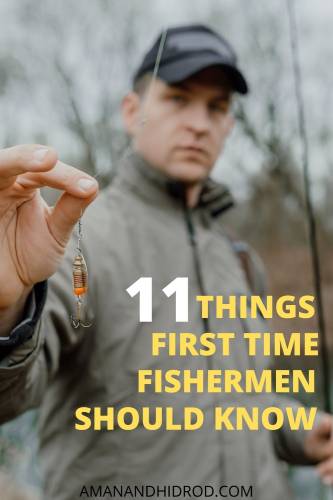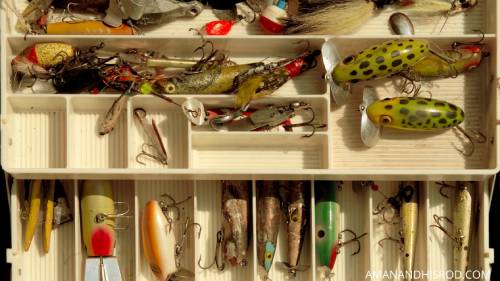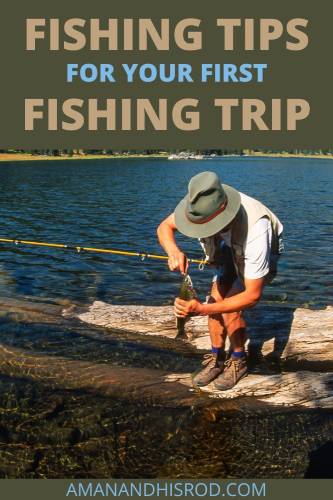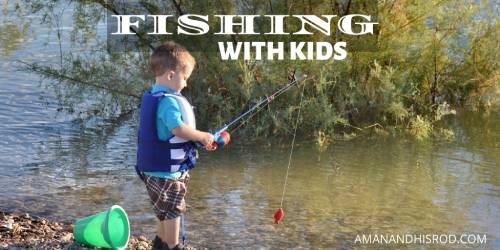Everyone loves to fish, but sometimes finding the time is tough. With all of us working full-time and having family commitments, it can be difficult to find that extra bit of time for fishing. However, there are plenty of ways in which you can get some quality fishing done without having to go far or take too much time away from your schedule. In this article, we will break down 11 things first time fishermen should know to make their first fishing trip a success.
People from all over the world are entering this great hobby, some as a means for food, and others to get outdoors and pass the time. Fishing has been around for thousands of years to provide food for civilizations. Today, many anglers fish as a sport to enjoy the outdoors, and some attempt to make money by starting a tackle company.
New anglers can fish for a variety of fresh and saltwater species, the most popular being bass, trout, and salmon. During the writing of this article, we are over a year into the COVID-19 pandemic, and people are flocking to the outdoors to find open spaces without socializing with others. Fishing is one industry that has grown exponentially during this time.
These 11 things first time fishermen should know are designed for you to enjoy your first fishing trip as well as give you a head start when trying to catch your first fish.
This website is reader-supported. Any purchases you make through links on this site earn us a commission at no additional cost to you. Thank you for your support!
1. Fishing Laws and Regulations
Every state in the Continental United States has fishing laws and regulations. Other parts of the world have their own laws and regulations as well. The rules dictate things such as licenses, fishing times such as seasonal shutdowns, size and bag limits, allowed bait and lures, and more.
It is the fishermen’s responsibility to know the regulations in the area they choose to fish. Simply saying “I didn’t know” won’t get you very far. With hundreds of thousands of new fishermen starting this hobby, it is more imperative than ever to follow the rules in order to protect our fisheries.
What if you don’t know local fishing laws?
If you are unaware of your local or state fishing rules and regulations, there are a few ways to get this information. First, a quick Google search of your state’s fish and wildlife organization should yield a website for you to visit. These websites have made strides over the last few years to make them user friendly.
The second method is to call the same organization and get information directly from the source.
Lastly, call a local bait or tackle shop and ask them. This is my least favorite way of obtaining information because it could give misinformation. A local tackle shop is not the end all say all, the state’s wildlife organization is. Bait shops may however have informational booklets that contain state laws and regulations that come from the state level. These booklets are often times free to anglers and make great reading materials to keep in your tackle box.
2. What Species of Fish are You Targeting
Now the fun begins! What type of fish do you want to catch? Oftentimes I see new anglers go fishing blindly, not knowing what fish they are looking to catch. This can be a huge beginner mistake for a first time fisherman.
Without knowing what species to fish for, an angler is fishing blindly. While this may be okay if your only intention is to sit outdoors and enjoy some quiet, it’s a huge mistake when trying to catch fish.

How do you know what fish to catch?
Instead of asking yourself what fish to catch, first ask yourself why you want to fish? Are you fishing to catch fish and then release them, or are you catching fish to eat? Do you want to sit and fish on the bank or fish from a boat to relax, or do you want to stay busy fishing while walking on the bank?
The problem is that depending on where you live, you may have species of fish that other areas do not have.
Two of my favorite species to catch are bass and trout. I’m fortunate enough to be able to fish bass ponds and catch trout in lakes, all within 30 minutes of my house.
The following is a list of potential species you may want to target
Best Fish to Catch While Sitting on the Bank
- Trout
- Pan Fish
- Catfish
- Bass
- Sturgeon
Best Species to target while walking the bank
- Bass
- Striper
- Walleye
- Pike
- Trout
4. What Fishing Gear Do You Need?

The third thing first time fishermen should know is what tackle to bring. This is another key element to your fishing success. Having a rod that is too stiff or too soft for the fish you are trying to catch could mean losing fish. Tackle is critical, so choose the right stuff.
What tackle should I bring?
The truth is that you will need a few different items of fishing gear just to get started. Don’t get discouraged, though, you don’t have to spend hundreds of dollars to get started. The biggest expense is typically the fishing rod and reel. There are plenty of fishing pole setups that are budget friendly. After that, you will need what is called terminal tackle.
Terminal tackle is gear that is attached to the fishing line. This includes weights, swivels, hooks, lures as well as other items. Terminal tackle can be affordable and does not have to break the bank.
Other fishing gear that should be considered is storage for your terminal tackle, such as a tackle box and a good quality stringer if you plan to keep your catch.
There are various types of fishing poles out there, but in my 30-plus years of fishing, I still use one of the first rods I ever purchased. In my review of my favorite beginner fishing rod, I talk about why I love this rod so much, but the main reason is its performance when compared to cost. I own very expensive fishing poles, and they are really nice, but I catch just as many fish as the cheaper counterpart.
For terminal tackle, you will need to bring with you the following items;
- Hooks
- Weights
- Swivels
- Bait, or
- Lures
- Bobber/Float
You shouldn’t need much more than this, and anyone who says you MUST have anything else is wrong. Fishing is a simple concept. Fish eat…..feed them.
RECOMMENDED ARTICLE >> 5 BEST TROUT LURES THAT CATCH FISH
4. Where to Go Fishing for The First Time
So we have our license, our fishing rod and reel, some tackle, and some lures or bait. It’s time to choose the location to catch some fish. Locations could be things such as lakes, rivers, streams, or even fishing stocked ponds.
No matter where you choose to fish, there are a few tips to keep yourself ahead of the competition.
Are you familiar with your local waterways?
If not, that’s okay, I have some ideas to help you find information. If you are completely unsure where to go your first time fishing try some of the following places to get ideas;
- Google Search (places to fish near me)
- Facebook Groups (fishing groups near “XYZ”)
- Local Fishing Stores (call and ask)
- State Wildlife Resources
These 4 things should be all you need to get a general idea of where to fish. Once you determine, the location in general, try and locate a spot that potentially holds more fish than the rest. This will bring us to our next topic.
5. Targeting High Probability Fishing Holes

This means that simply showing up and sitting on the edge of the lake or reservoir will not always cut it. If you really want to find fishing success your first time out, you want to look for a few of the following places to fish.
- Inlets to a Body of Water
- Main Lake Points
- Structures such as Rock Piles
- Docks
- Dams
- Steep Banks
These are just some features to look for while trying to find a good fishing spot. You see, fish like to have fresh oxygenated water (inlets), safety (structure), and food (found near structure). Fish will frequent areas that their prey will use to hide. Small fish and crawdads will use structures such as rocks to avoid larger predators.
Finding these locations may be as simple as driving to the lake and looking around to find easily identifiable areas. Google Earth is another great way to visit a geographical area and do research. You may even see something from the sky (google earth) that you can’t see from the shore such as a channel of bottom contours.
However, you decide to choose a location, make sure that it makes sense in a fish’s day activities. Fish will feed, shelter, feed, and repeat.
6. What to Use When Fishing
By now, you should have a good idea of the species you are fishing for. If you decide to sit stationary, bait will be your ideal choice. The best fishing bait can vary depending on the species of fish and seasons. You can use artificial bait such as powerbait or live bait such as worms.
In my personal experience, both of these have a place in your tackle box and each can be equally effective. More times than not, however live worms are the preferred bait for most fish species.
Worms can be found in almost all aquatic habitats making them an ideal choice for fishermen. Worms can be fished from a bobber or on the bottom of the lake. Both methods are effective. Other great baits to use include grasshoppers, crayfish, and leeches.
What if I want to stay active while fishing?
Then fishing lures is the way to go for you. Fishing with lures means that you will cast and immediately retrieve your lure while imitating something that fish normally eat. Lures can imitate other fish, crawdads, lizards, and even baby ducks.
The goal is to trick the fish into biting your lure while retrieving it. Lure fishing is definitely harder to learn than bait fishing but is far more rewarding when you catch a fish. The lure can vary in price from just around a dollar to hundreds of dollars for upper end fishing lures.
The advantage to walking the bank fishing with lures is you are making multiple casts in short amounts of time while covering water. This means you are increasing your odds of putting the lure in front of the fish, thus enticing a bite.
RECOMMENDED ARTICLE >> 7 BEST BASS FISHING LURES OF ALL TIME
7. How to Rig Your Fishing Bait or Lure
Knowing how to rig a fishing pole is important because this will dictate how our bait or lure reacts in the water. If rigged incorrectly, your lure will react unrealistically or your bait may not present itself naturally. Rigging your fishing set up correctly allows fish to be enticed into biting more often.
So how do you rig your bait setup?
The best way to explain this to someone is to show them. I have attached a short video outlining how to rig a simple bait setup. In the video, he refers to fishing for trout, but this same setup can be used to fish for most species.
Notice in the video he attempts to thread his worm onto the hook in a specific way. In many of my other posts, I have recommended a worm threader when using nightcrawlers for bait. Worm threaders allow for the worm to be secured better to the hook and really embed the hook in the meat of the worm increasing your odds the fish will actually get hooked.
Notice in the videos where after he attaches the swivel, he clasps the pre-tied hook into the swivel and locks it in. Well while fishing with lures this is where you would attach them, into the swivel. During lure fishing, you should elect not to have weights attached whenever possible. Weights can affect the action of a lure creating a less than realistic presentation.
My favorite bank fishing baits of all time would work almost anywhere to catch fish. Over the years, these baits have proven to produce results for me.
8. How to Cast A Fishing Rod
This may seem like a really odd thing to ask but if you have made it this far into that article this is probably a really valid question. Casting your standard spinning rod and reel is quite simple. Again this is not something that is easily conveyed through text, so I have attached a short video outlining the steps necessary to learn how to cast a fishing pole.
In these steps, Joshua explains the components of a fishing setup as well as how to cast.
Casting and getting your line out into the water is the easy part. Casting to the spot that you intended to is the more difficult part. This will come with practice and patience. You will learn over time how certain lures or baits are cast in all conditions, including climate weather.
Learning how to cast a fishing pole is extremely important in the overall outcome of your success. A bad cast could spook fish resulting in them leaving the spot you are fishing. Practice the movement of casting in your yard prior to heading out for the first time. Just be careful not to nick your line when doing so. Having knicks in your line could result in you losing your first fish because of a line break.
9. What to Do when Fish Bite
Detecting a bit is sometimes not as obvious as you might think. Normally when a fish bites a hook, your pole will bounce aggressively, indicating a bite. What we do from here is critical to landing that fish. The goal is to “set the hook” while the fish has the bait or lure in its mouth. Here are a few tips to increase your odds of success.
- Point the Rod Toward the Fish Slightly
- Remove Slack Before Setting the Hook
- Wait for a Bite to Happen
- Set the Hook (snap the rod tip back toward your head)
- Do NOT allow slack in the line once the fish is on

Now there are many things that can go wrong in this process. Here are some things that you don’t want to do while setting the hook.
- Don’t move your bait while getting a bit. (may spook the fish)
- Do not allow slack in your line while setting the hook
- You must keep tension on the fish at all times
- Don’t forget to adjust your drag (for the big ones)
Eliminating these four things will increase your chances exponentially while trying to set the hook on a fish. Once the fish gets hooked on your line it’s time to fight the fish in order to get to shore.
10. Fishing and Landing A Fish
Finally, we have arrived at the best part of fishing… fighting, and landing the fish. This is the moment fishermen live for. Knowing how to fight and land fish is actually a pretty basic process.
Here are a few tips once you have the hook set.
- Tension is Key
- Set Your Drag
- Rod Position is Key
- Work on Tiring Larger Fish
- Have a Net Handy
Let’s start with the first tip, tension. When talking about the tension we want just enough to keep the hook buried in the fish’s mouth but not so much that our line breaks under pressure.
Next is the drag. Your drag is adjustable and is usually a knob found on the top of the fishing reel. Turning the knob to the left will loosen the drag and cause less tension. Tightening the drag by turning it to the right (or clockwise) increases the drag. You want the drag to be set so that by lifting your rod tip you can move the fish but lose enough so that if the fish pulls too hard, your reel allows the line to spool toward the fish. You will have to play with this some to understand it better.
While fighting the fish there you should be moving the rod tip to different positions in order to maintain the right amount of tension. Typically with small fish, you should be able to maintain a 45-degree angle and just reel the fish in. Larger fish will try to swim to deeper water, shake their head to throw the hook, and swim side to side in order to try and break free. In general, keep your rod tip up and to the opposite side that the fish is moving. If the fish swims left your rod should be pointed to the upper right side of your body.
Tiring the fish out is often necessary to landing even decent fish. Forcing a fish to come to shore before they are ready to give up is called “horsing the fish”. Horsing a fish to shore means they still have a lot of energy to fight and flop. If you don’t have a net, the fish will beat itself up on the bank while you’re fumbling to get a firm grasp. Tiring a fish out will help have a smooth and painless catch at the bank.
11. Have Fun No Matter what
I know this really isn’t really a helpful tip, but the point is not to get frustrated. Learning a new hobby like fishing can become boring or not enjoyable after not catching fish. Just remember that at least you’re out there trying to learn something new. Don’t be hard on yourself sometimes, success can take time. Even fishermen like myself who have been fishing for many years still learn new things all the time. I am constantly changing my approach and looking for a better way to catch fish.
If you have questions about anything in this article, please don’t hesitate to ask in the comments below. Likewise, if you have a tip that you think a first time fisherman should know, add it to the comments section for the whole community to see.

